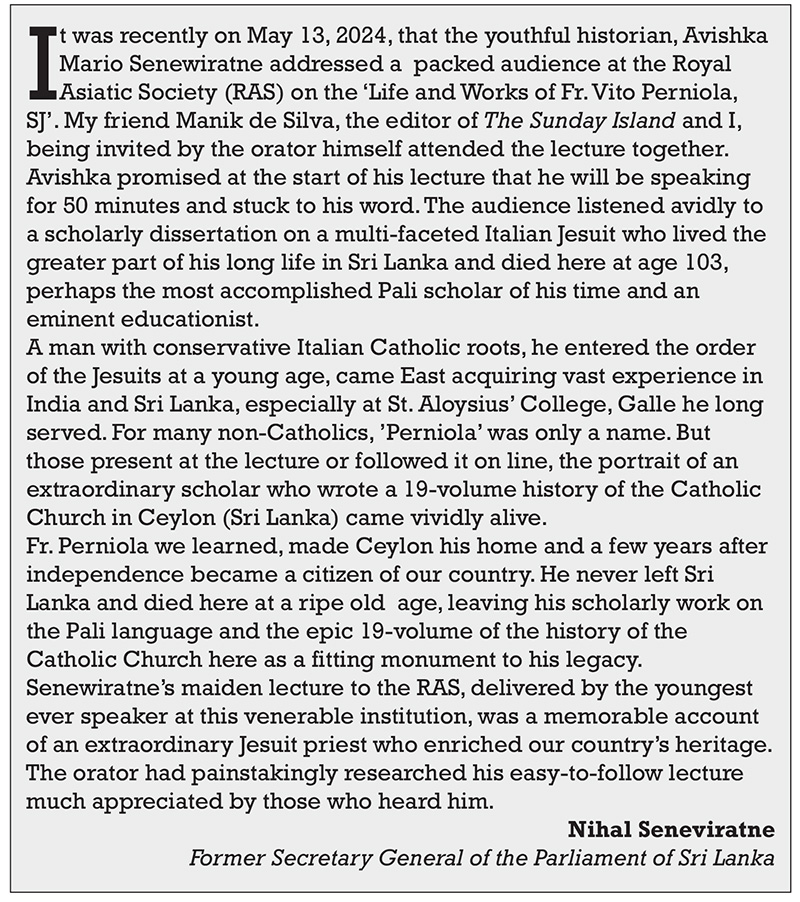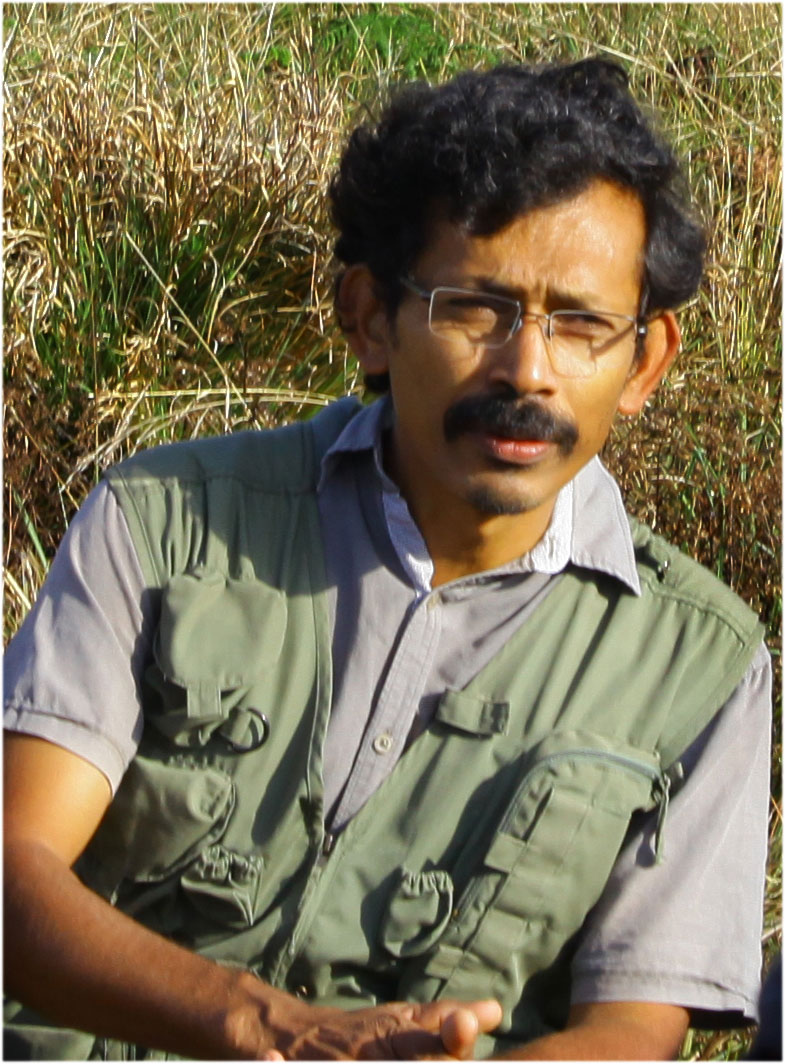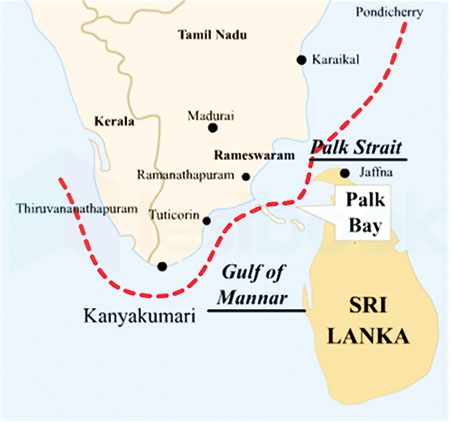Features
Eighty years in Sri Lanka:The Life and Times of Fr. Vito Perniola SJ
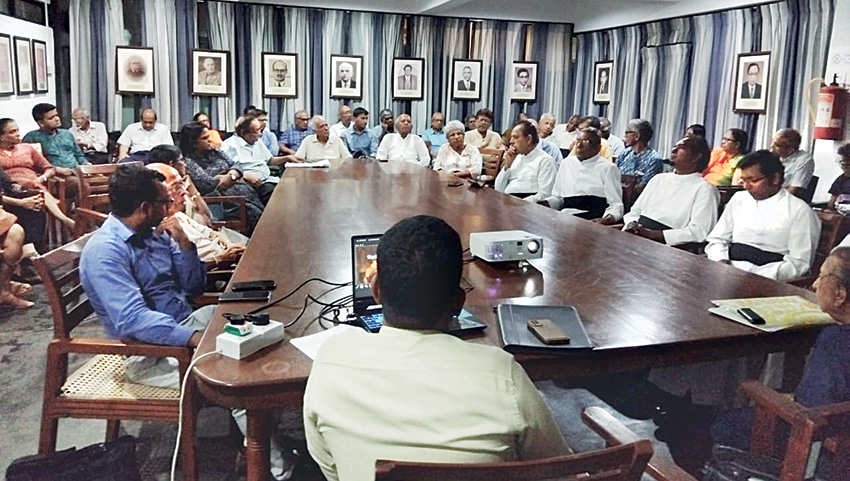
By Avishka Mario Senewiratne
Royal Asiatic Society of Sri Lanka
May 13, 2024
I always wonder how he did it? A simple, slender Italian priest who used the bus to get about. He was one who never compromised on discipline. A stickler for proper diction who spoke a manifold of Western and Oriental languages. A first-rate scholar who realized there was a single door one could walk in and outof between history and social linguistics. He embraced the Lankan heritage by becoming a distinguished citizen of the country just after independence.
Generations not born here will laud and praise the memory of Father Vito Perniola of the Society of Jesus for his exemplary efforts in publishing 19 definitive volumes on the Catholic Church of Sri Lanka. Abstemious by nature, and frugal in food, drink, clothes, and lifestyle, Fr. Vito Perniola was a shining example of plain living and high thinking.
Vito Perniola was born in Bari, South Italy on April 10, 1913, the fifth in a family of 11. His parents were Michele Perniola and Lucia di Gregorio, a well-to-do family. Deeply religious and conservative, they live a spiritual life, guided by their Parish Church. Though Vito’s father wanted him to pursue higher education as layperson, one event changed his life plans. While 11-year-old Vito was praying at the altar of St. Francis Xavier in his Parish Church, he received a strong calling to the priesthood. He discerned at that age that this was his true vocation; to be a Jesuit. With that conviction, he told his parents of his wish. Though upset, they consented.
Vito’s elder brother and two of his sisters would join different religious congregations. In 1925, at the age of 13 years, Vito joined the Society of Jesus. He was determined to be of the same order as St. Francis Xavier. In 1928, he joined the Jesuit Novitiate in Naples. From those early days, he displayed his great talents for studies. It was in Naples that he became aware of the Sacred Heart College, Shembaganur in South India from a catalogue of Jesuits institutions and seminaries. Realizing that this was the country where his saint hero, Xavier had been a missionary, Perniola was determined to receive his formation in India and later be a missionary in Ceylon, a country of which he had heard fascinating stories.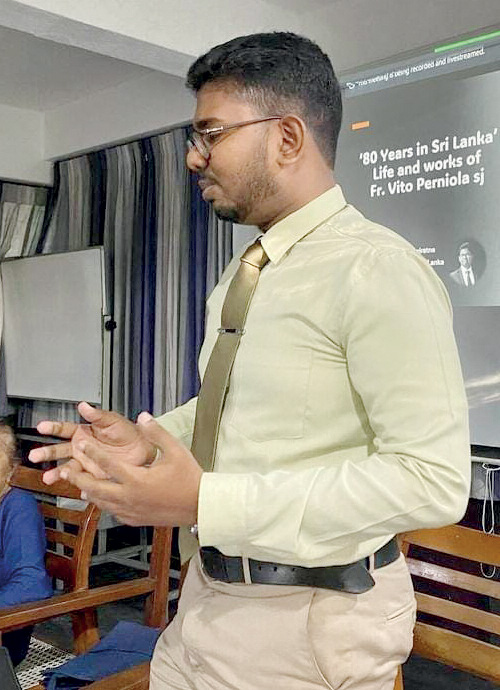
In his writings Perniola states that his time at Shembaganur were the best days of his life. Coming from a conservative Italian background, he encountered an all embracing setting in this part of the world. The weather here was sublime. It was here that he learned English for the first time. After four years of formation and philosophical studies in Shembaganur, Perniola departed for Ceylon, which was British Colony at the time. He had heard of the great work the Belgian and Italian Jesuits had done in the Jesuit Province of Galle since 1893.
In June 1936, Vito Perniola sat the Matriculation Examination. His subjects were English, Mathematics, Latin, Greek and Italian. Till he received his results he learned Sinhala. Perniola spoke fluent, grammatically correct Sinhala with a South Italian accent. He spent his time between serving in Parishes and teaching at St. Aloysius’ College, Galle.
When he was at the stage of deciding what field of studies to pursue, he made a choice that surprised many. He said to his superiors: “… Jesuits had already been in Sri Lanka for 50 years and yet nobody has studied Buddhism. Could I study Buddhism or Pali?” The Superiors supported Perniola’s intention. However, there was nobody within the Jesuit community who could teach him and provide him sources of references. This did not bother Perniola the least as he studied on his own, travelling across the country to study in the best libraries. Within a short time, he learnt both Pali and Sanskrit. He knew these languages better than most locals. It was decided that he be enrolled in Bachelor’s program at the University of London where he studied alone as there was no one to guide him.
In his early writing Perniola says: “The relationship between Pali and Sanskrit is very much like that of Italian and Latin. No Pali grammar can be written without reference to Sanskrit. For Sanskrit I had an excellent grammar; for Pali I had nothing worth the name.” Through perseverance and methodical study, he passed his exams and received his B.A. (Hons) in 1940. The best Pali scholars at the time were mostly German. Their texts elucidating Pali and Sanskrit were noteworthy efforts. To understand Pali better, Perniola studied German, a language difficult to master.
He entered the Papal Seminary, Kandy for his Theological Studies. It was during this time that World War II broke out and Italians in Ceylon were under scrutiny and some were sent for interment. However, the Bishop of Kandy, Msgr. Dom Bernard Regno OSB (an Italian himself), intervened and convinced his close friend, Governor Sir Andrew Caldecott, to spare the seminarians in Kandy. Accordingly, Perniola remained free despite the tensions of the War.
On June 21, 1943, Fr. Perniola was ordained a Priest by Bishop Nicholas Laudadio SJ at the Cathedral of Galle. After serving a few years in parishes such as Hiniduma, Fr. Perniola was appointed to the tutorial staff of St. Aloysius’ College, Galle in 1947. To his great disappointment, he did not have provisions to teach Pali, which was his speciality as there were no Pali classes in St. Aloysius.’ However, as there was a vacancy for teaching history, Fr. Perniola was assigned to teach that subject. It was during this time that he came to know Fr. S G. Perera, the revered historian, who was by then half-paralyzed and a resident of St. Aloysius’ College. Fr. Perera and Fr. Perniola developed a great friendship. Soon, with much support from Fr. Perera, Fr. Perniola had a sound knowledge and understanding of the history of Ceylon. It is ironic that an Italian taught Ceylon history to young Ceylonese boys!
Fr. Perniola taught history to the boys of St. Aloysius’ using the textbook prepared by Fr. Perera in 1932, History of Ceylon for Schools. This book which covered colonial Ceylon, was authoritative and scholarly textbook that remained the standard textbook of all Ceylon schools until the early 1960s. A few years after Fr. Perera’s death in 1956, Fr. Perniolal at the request of the Associated Newspapers of Ceylon Ltd., revised and enlarged Fr. Perera’s textbook. This was a useful contribution that the students and scholars of the time appreciated.
During the early 1930s, Fr. S. G. Perera had begun a project to document the history of the Catholic Church during the Dutch period. He had published a few of these documents, but the project was far from complete. Fr. Perniola took up the challenge to finish this work. In the process of understanding the documents of the Portuguese period, he learnt Portuguese. However, with other work in his ministry, he had to postpone this project. In 1949, Fr. Perniola received distinguished citizenship of the country, approved by D.S. Senanayake, the Prime Minister, and Minister of Defence and External Affairs.
Fr. Perniola was appointed Rector of St. Aloysius’ College for three years. During this period St. Aloysius College, dubbed by some as the ‘University of Galle,’ had some renowned educationists such as Frs. Julius Pogany, Chiriatti, Claude Daly, P. N. Peiris and many others. The school magazine contained scholarly articles by the staff and students. When this magazine, The Aloysian reached the Peradeniya or Colombo campuses of the University of Ceylon, readers were left amazed by the quality of the articles. A few years after his term ended, Fr. Perniola accepted Fr. Peter Pillai OMI’s invitation to join the newly established Aquinas College, Colombo as a lecturer in Pali, teaching the language to Arts students. At that time, Aquinas was affiliated to the University of London.
He enjoyed this new venture but realized that there was no Pali grammar textbook for students. Learning a new and complex language from scratch to degree level, warranted a well composed grammar book. For this purpose, Fr. Perniola himself compiled a textbook called Pali Grammar in 1958. This was one of the best textbooks ever on the language. Many Buddhist monks and others have studied Pali grammar referring to this book without even knowing that the author was an Italian Catholic priest. In 1997, the Pali Text Society of the University of Oxford republished this book as the official Pali Grammar.
Perniola was consulted by many scholars then and now. Dr. C. E. Godakumbura, Prof. Sucharita Gamlath and Dr. Ananda W. P. Guruge have warmly praised his linguistic efforts. Prof. Gamplath, in an article to Silumina on September 29, 2002, stated that “Existing Sinhala Grammars should be revised on the basis of Perniola’s insight”. Dr. Guruge in his autobiography titled Ma Vani Bilinda acknowledges his debt to Perniola’s guidance.
Fr. Perniola was a man with a tremendous sense of discipline in nearly everything he did. He always stuck to the rules and clauses of the language. Though his writings and works were grammatically perfect, at times he lacked style and elegance of writing. Fr. Aloysius Pieris SJ in his tribute to Fr. Perniola states: “It is also true that intense focus on the rules of the game sometimes prevented him from playing the game in style.
“ In 2013, Prof. Ven. Gnanaratana Thera, gave a professional assessment on Perniola, the grammarian (cf. Krinsansa, December 2013, pp. 144-153). The Ven. Thera states that Perniola followed a ‘middle path between overly philological and excessively traditional approaches to Pali grammar. He mastered the scriptural Pali as to have adduced rare, hitherto unmentioned examples of Pali usages to illustrate various grammatical rules.’
Furthermore, the Ven. Thera made a comparison between the German scholar Wilheim Geiger and Fr. Perniola saying the latter was more methodical and incredibly familiar with the language and idiom of Pali. Fr. Perniola’s dissertation on ‘Samasa’ (multi-barreled word compounds) resulted him being awarded a doctorate on linguistics from the University of Poona in 1966.
At Aquinas, Fr. Perniola taught Theology for many years. He was made acting rector when Fr. Tissa Balasuriya OMI was overseas. This was the time that the 1971 JVP insurrection took place. Fr. Perniola also served as the Vice Rector to Fr. W. L. A. Don Peter at Aquinas. During his stay in Colombo, Fr. Perniola became a popular figure among the laity. He was counselor and spiritual guide to many religious and laypeople. Despite his busy schedule, he always made himself available to anyone who sought his guidance. He compiled three useful books on meditation, namely, ‘Touching the Divine’, ‘Abiding in Love’ and ‘Praying with Scriptures’. These books went into several editions and over 10,000 copies have been sold. This has been an essential guide for many seminarians, priests as well as laypeople.
In 1972, Fr. Vito Perniola was appointed as the Provincial of the Jesuits in Sri Lanka. After his term ended, there was much pressure on why no one was continuing what Fr. S. G. Perera had begun on the Catholic Church history during the Dutch period. The recently retired Bishop of Chilaw, Bishop Edmund Peiris, appealed to Fr. Perniola to commence this work. This is how Fr. Perniola embarked on the project for which he is mostly remembered. With the support and blessing of Fr. Thomas Kuriacose SJ, the Provincial, Fr. Perniola started to gather documents for this monumental work.
In the late 1970s, he was awarded a scholarship by the House of Writers of the Society of Jesus in Rome and a research grant from Missio in Germany. This enabled him to travel to Rome, Portugal, and the Netherlands in the quest of tracking and procuring documents pertaining to the Dutch Period in Ceylon, collecting several documents on the Portuguese and British periods as well. He immediately realized that he would have to compile similar volumes for those periods too.
The translations of the Dutch period documents were not easy. With the help of the former Government Assistant Archivist, S. A. W. Mattau and number of other scholars Fr. Perniola translated Dutch and other documents of the period. Documenting the correspondence and reports of the early Oratorian missionaries such as Fr. Joseph Vaz and Fr. Jacome Goncalvez were noteworthy contributions. These documents reveal the cordial relationship between the Kandyan kings and Oratorian missionaries as well as the moderate attitude taken by the Dutch for the benefit of the Catholics during and after Dutch-Kandyan wars. Fr. Perniola quite objectively shares the documents of the time the missionaries fell out with the Nayakkar kings over mistakes on their part. Accordingly, between 1983 and 1985, Fr. Perniola compiled three large tomes on the Dutch Period.
These volumes impressed not only Catholics but also non-Catholics as well. It contained documents that no one ever imagined would see the light of day. These included correspondence of Kandyan Kings, Dutch Governors, Viceroys, Papal Secretaries, missionaries, and others. Fr. Perniola translated them in such a way that the discerning reader would easily understand them. If there were inconsistencies or inaccuracies in the letters, he would state them in the footnotes and give a far more comprehensive detail of what mattered. His works were well supplemented by a carefully compiled glossary, bibliography, and index. Clearly, a researcher who bases his work on these documents compiled by Perniola, can easily profit from them. Fr. Perniola’s introductions to each book sums up his ability to elucidate a sophisticated and well research twist of history. He gave a balanced, objective analysis of the period, people, and events he dealt with, often being critical of the mistakes made by religious missionaries.
Between 1989 and 1991, Fr. Perniola published three volumes on the Portuguese period. They ranged from the years: Volume 1: 1505-1565, Volume II: 1566-1619, Volume III: 1619-1656
When the British arrived in Ceylon, the country was divided into the Kingdom of Kandy and the coastal region which was under colonial rule. The Catholic Church of Ceylon was a single province under Cochin. It was only in 1845 that the island was divided into two vicariates: the Colombo (South) and Jaffna (North) Vicariates. In 1883, Kandy was made a separate Vicariate. After the establishment of the hierarchy of the Catholic Church in Ceylon in 1887, Colombo became an Archdiocese and Jaffna and Kandy became Dioceses. Six years later, the Diocese of Galle and Trincomalee were established. This is the reason why Fr. Perniola compiled 13 volumes on the British Period alone. As those years were close to the present, the number of documents increased by leaps and bounds. Essentially, he had enough content to compile a book covering each year.
In the quest of translating old documents written in a manifold languages such Portuguese, Latin, Dutch, French and others, Fr. Perniola states:
“I try to make the translation readable. Those who wish to study the style of an author, ought to go to the original. Thus, in some way the Italian saying remains true: traduttore, traditore (a translator is a traitor!). But while I have made the translation readable, I have tried to be faithful to the meaning of the text.”
Each and every book by Fr. Perniola was well accepted. Hardly anyone has ever taken the hard road he had in documenting over 10,000 pages of the Catholic Church in Sri Lanka. It is indeed a gigantic contribution. The final years of his life were very challenging as some blocked Fr. Perniola from tracing important documents of the period as they felt challenged. Nevertheless, his final book was published in 2011, when he was 97 years old.
His efforts in documenting history and Pali grammar were barely recognized by the Catholic Church. No one he associated with realized the importance of what he had been diligently working on in the twilight of his life. However, on the verge of turning 100 years, the Royal Asiatic Society of Sri Lanka, of which Fr. Perniola was a member for nearly 70 years, awarded the prestigious Gold Medal of the Society which only a few scholars of yesteryear have been privileged to receive. This was a well-deserved recognition. Fr. Perniola continued writing short articles to the newspapers till he passed away in January 2016.
Fr. Perniola’s legacy will remain in the words and efforts of his very many books. There are many gaps yet to be covered and his 19 volumes on the Catholic Church would save years of research and money for the present and future scholar, for he had methodically included nearly everything relevant in these volumes. Essentially, if one owns these books, he or she has direct access to a well-set archive, supplemented by an index. Following are a few ideas and factors that can be derived after perusing Fr. Perniola’s books:
· The writing of an authoritative account of the history of the Catholic Church in Sri Lanka
· Supplementing local history of Sri Lanka
· The writing of biographies of individuals, accounts of congregations, institutions, events and dioceses
· The reconciliation of past errors and the celebration of triumphant moments in history
· Inter-religious, inter-racial dialogue
Features
Challenges to addressing allegations during Sri Lanka’s armed conflict
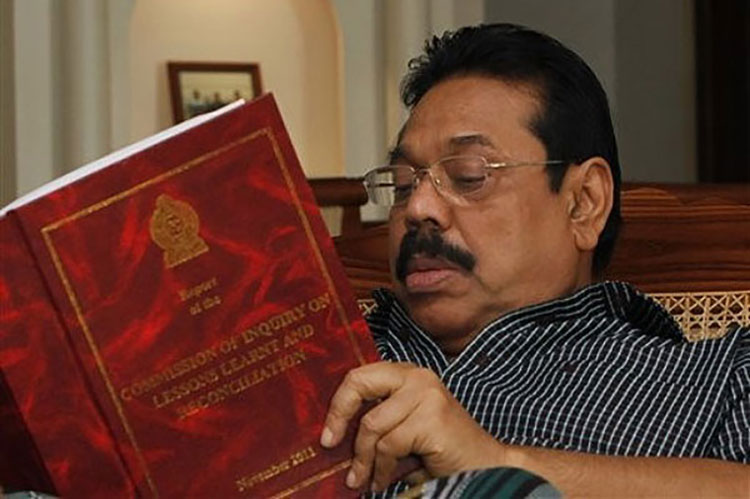
A political commentator has attributed the UK sanctions against four individuals, three of whom were top ranking Army and Navy Officers associated with Sri Lanka’s armed conflict, to the failure of successive governments to address human rights allegations, which he describes as a self-inflicted crisis. The reason for such international action is the consistent failure of governments to conduct independent and credible inquiries into allegations of war crimes; no ‘effective investigative mechanism’ has been established to examine the conduct of either the Sri Lankan military or the LTTE.
He has not elaborated on what constitutes an “effective investigative mechanism. He has an obligation and responsibility to present the framework of such a mechanism. The hard reality however is that no country, not even South Africa, has crafted an effective investigative mechanism to address post conflict issues.
INVESTIGATIVE MECHANISMS
The hallmark of a credible investigative mechanism should be unravelling the TRUTH. No country has ventured to propose how such a Mechanism should be structured and what its mandate should be. Furthermore, despite the fact that no country has succeeded in setting up a credible truth-seeking mechanism, the incumbent government continues to be committed to explore “the contours of a strong truth and reconciliation framework” undaunted by the failed experiences of others, the most prominent being South Africa’s Truth and Reconciliation Commission.
South Africa’s Truth and Reconciliation Commission is often cited as the gold standard for post conflict Mechanisms. Consequently, most titles incorporate the word “Truth” notwithstanding the fact that establishing the “Truth” was a failure not only in South Africa but also in most countries that attempted such exercises.
Citing the South African experience, Prof. G. L. Peiris states: “pride of place was given to sincere truth-telling which would overcome hatred and the primordial instinct for revenge. The vehicle for this was amnesty…… Despite the personal intervention of Mandela, former State President P. W. Botha was adamant in his refusal to appear before the Commission, which he deemed as ‘a fierce unforgiving assault’ on Afrikaaners” (The Island, 01 April, 2025). In the case of Sri Lanka too, disclosures to find the “Truth” would be all about the other party to the conflict, thus making Truth seeking an accusatory process, instead of a commitment to finding the Truth. The reluctance to engage in frank disclosure is compounded by the fear of recrimination by those affected by the Truth.
Continuing Prof. Peiris cites experiences in other countries. “Argentina, the power to grant amnesty was withheld from the Commission. In Columbia, disclosure resulted not in total exoneration, but in mitigating sentences. In Chile, prosecutions were feasible only after a prolonged interval since the dismantling of Augusta Pinochet’s dictatorship ….” (Ibid).
The mechanisms adopted by the countries cited above reflect their own social and cultural values. Therefore, Sri Lanka too has to craft mechanisms in keeping with its own civilisational values of restorative and not retributive justice for true reconciliation, as declared by President J. R, Jayewardene in San Francisco as to what the global attitude should be towards Japan at the conclusion of World War II. Since the several Presidential Commissions appointed under governments already embody records of alleged violations committed, the information in these commission reports should be the foundation of the archival records on which the edifice of reconciliation should be built.
ESTABLISHING DUE CONTEXT
The suggestion that an independent and credible inquiry be conducted into allegations of war crimes reflects a skewed understanding of the actual context in which the armed conflict in Sri Lanka occurred. Even the UNHRC has acknowledged that the provisions of “Article 3 common to the four Geneva Conventions relating to conflicts not of an international character is applicable to the situation in Sri Lanka, as stated in para. 182 of the OISL Report by the UNHRC Office. Therefore, the correct context is International Humanitarian Law with appropriate derogations of Human Rights law during an officially declared Emergency as per the ICCPR.; a fact acknowledged in the OISL report.
Consequently, the armed conflict has to conform to provisions of Additional Protocol II of 1977, because “This Protocol, which develops and supplements Article 3 common to the Geneva Conventions is the due context. There is no provision for “alleged war crimes” in the Additional Protocol. Although Sri Lanka has not formally ratified Additional Protocol II, the Protocol is today accepted by the Community of Nations as Customary Law. On the other hand, “war crimes” are listed in the Rome Statute; a Statute that Sri Lanka has NOT ratified and not recognized as part of Customary Law.
Therefore, any “investigative mechanism” has to be conducted within the context cited above, which is Additional Protocol II of 1977.
SRI LANKAN EXPERIENCE
On the other hand, why would there be a need for Sri Lanka to engage in an independent and credible inquiry into allegations, considering the following comment in Paragraph 9.4 and other Paragraphs of the Lessons Learnt and Reconciliation Commission (LLRC)?
“In evaluating the Sri Lankan experience in the context of allegations of violations of IHL (International Humanitarian Law), the Commission is satisfied that the military strategy that was adopted to secure the LTTE held areas was one that was carefully conceived in which the protection of the civilian population was given the highest priority”
9.7 “Having reached the above conclusion, it is also incumbent on the Commission to consider the question, while there is no deliberate targeting of civilians by the Security Forces, whether the action of the Security Forces of returning fire into the NFZs was excessive in the context of the Principle of Proportionality…” (Ibid)
The single most significant factor that contributed to violations was the taking of Civilians in the N Fire Zone hostage (NFZ) by the LTTE. This deliberate act where distinction between civilian and combatant was deliberately abandoned, exposed and compromised the security of the Civilians. The consequences of this single act prevent addressing whether military responses were proportionate or excessive, or whether the impact of firing at make-shift hospitals were deliberate or not, and whether limiting humanitarian aid was intentional or not. These issues are recorded and addressed in the Presidential Commission Reports such as LLRC and Paranagama. This material should be treated as archival material on which to build an effective framework to foster reconciliation.
UK SANCTIONS
Sanctions imposed by the UK government as part of an election pledge for Human Rights violations during the armed conflict is a direct act of intervention according to Article 3 of the Additional Protocol of 1977 that is the acknowledged context in which actions should be judged.
Article 3 Non-intervention states:
1 “Nothing in the Protocol shall be invoked for the purpose of affecting the sovereignty of a State or the responsibility of the government by all legislative means, to maintain or re-establish law and order in the State or to defend the national unity and territorial integrity of the State”.
2 “Nothing in the Protocol shall be invoked as a justification for intervening directly or indirectly, for any reason whatsoever, in the armed conflict or in the internal or external affairs of the High Contracting Party in the territory on which the conflict occurs”.
Targeting specific individuals associated with the armed conflict in Sri Lanka is a direct assault of intervention in the internal affairs of Sri Lanka. The UK government should be ashamed for resorting to violating International Law for the sake of fulfilling an election pledge. If Sri Lanka had issued strictures on the UK government for not taking action against any military officers responsible for the Bloody Sunday massacre where 26 unarmed civilians participating in a protest march were shot in broad daylight, Sri Lanka would, in fact be intervening in UK’s internal affairs.
CONCLUSION
The UK’s action reflects the common practice of making election pledges to garner targeted votes of ethnic diasporas. The influence of ethnic diasporas affecting the conduct of mainstream politics is becoming increasingly visible, the most recent being the Tamil Genocide Education Week Act of Ontario that was dismissed by the Supreme Court of Canada on grounds the Provincial Legislations have no jurisdiction over Federal and International Laws.
However, what should not be overlooked is that the armed conflict occurred under provisions of common Article 3 of the Geneva Conventions. This Article is developed and supplemented by Additional Protocol II of 1977. Therefore, since all Geneva Conventions are recognised as Customary Law, so should the Additional Protocol II be, because it is a development of common Article 3.
Imposing sanctions under provisions of Additional Protocol II amounts to Intervention in internal affairs of a State as stated in Article 3 of the Protocol; II cited above. Such interventions are prohibited under provisions of international law.
The need to revive independent and credible inquiries after the lapse of 16 years is unrealistic because those who were perpetrators and victims alike cannot be identified and/or located. Furthermore, the cost of disclosure because of the possibility of retribution would compromise their security. A realistic approach is to use the material recorded in the Presidential Commission Reports and treat them as archival records and use the lessons learnt from them to forge a workable framework that would foster unity and reconciliation with the survivors in all communities This is not to live in the past but to live in the here and now – the present, which incidentally, is the bedrock of Sri Lanka’s civilisational values.
by Neville Ladduwahetty
Features
The Silent Invasion: Unchecked spread of oil palm in Sri Lanka
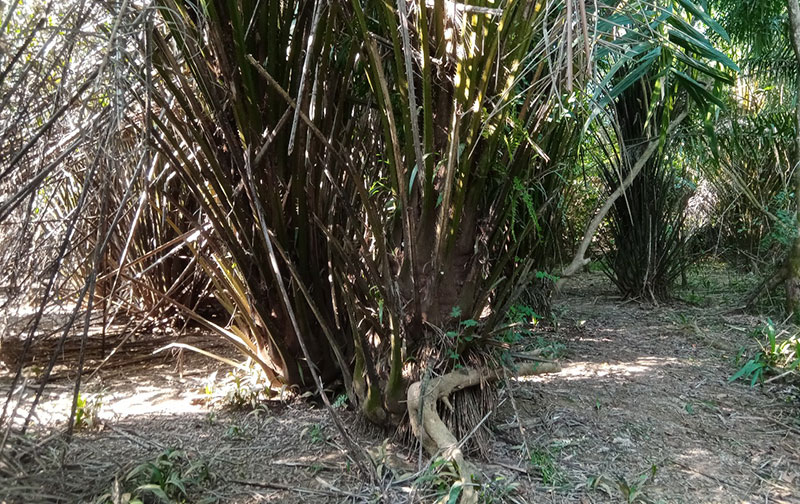
Sri Lanka’s agricultural landscape is witnessing a silent yet profound transformation with the rapid expansion of oil palm plantations. Once introduced as a commercial crop, the oil palm (Elaeis guineensis) is now at the center of a heated debate, with environmentalists and scientists warning of its devastating ecological consequences.
Speaking to The Island research scientist Rajika Gamage, said: “The spread of oil palm in Sri Lanka is not just a concern for biodiversity, but also for water resources, soil stability, and even local economies that rely on traditional crops.”
A Brief History of Oil Palm Cultivation
Oil palm, originally from West and Central Africa, was first cultivated for commercial purposes in Java in 1948 by Dutch colonists. It reached Malaysia and Indonesia by 1910, where its lucrative potential drove large-scale plantations.
According to Gamage, in Sri Lanka, the first significant oil palm plantation was established in 1968 at Nakiyadeniya Estate by European planters, initially covering a mere 0.5 hectares. Today, oil palm cultivation is predominantly concentrated in Galle, Matara, and Kalutara districts, with smaller plantations in Colombo, Rathnapura, and Kegalle.
Over the decades, he says the commercial viability of oil palm has prompted its expansion, often at the cost of native forests and traditional agricultural lands. Government incentives and private investments have further accelerated the spread of plantations, despite growing concerns over their environmental and social impacts.
Economic Boon or Environmental Curse?
Supporters of oil palm industry argue that it is the most efficient crop for vegetable oil production, yielding more oil per hectare than any other alternative. Sri Lanka currently imports a significant amount of palm oil, and expanding local production is seen as a way to reduce dependence on imports and boost local industries. However, Gamage highlights the hidden costs: “Oil palm plantations deplete water sources, contribute to soil erosion, and threaten native flora and fauna. These are long-term damages that far outweigh the short-term economic benefits.”
One of the primary environmental concerns is the aggressive water consumption of oil palm, which leads to the depletion of underground aquifers. This is particularly evident in areas such as Kalu River and Kelani River wetlands, where native ecosystems are being severely affected. Additionally, soil degradation caused by extensive monoculture farming results in loss of fertility and increased vulnerability to landslides in hilly regions.
Furthermore, studies show that oil palm plantations disrupt the natural habitats of endemic species. “Unlike rubber and coconut, oil palm does not support Sri Lanka’s rich biodiversity. It alters the soil composition and prevents the regeneration of native plant species,” Gamage explains. The loss of forest cover also exacerbates human-wildlife conflicts, as displaced animals venture into human settlements in search of food and shelter.
A Threat to Indigenous Agriculture and Culture
Beyond environmental concerns, oil palm is also threatening traditional crops like kitul (Caryota urens) and palmyrah (Borassus flabellifer), both of which hold economic and cultural significance. “These native palms have sustained rural livelihoods for centuries,” says Gamage. “Their gradual replacement by oil palm could lead to economic instability for small-scale farmers.”
Kitul tapping, an age-old tradition in Sri Lanka, provides a source of income for thousands of families, particularly in rural areas. The syrup extracted from kitul is used in local cuisine and traditional medicine. Similarly, palmyrah has deep roots in Sri Lankan culture, particularly in the Northern and Eastern provinces, where its products contribute to food security and local industries.
The rise of oil palm plantations has led to the clearing of lands that once supported the traditional crops. With large-scale commercial investments driving oil palm expansion, small-scale farmers are finding it increasingly difficult to sustain their livelihoods. Gamage warns, “If we allow oil palm to replace our native palms, we risk losing not just biodiversity, but also a vital part of our cultural heritage.”
The Global Perspective: Lessons from Other Nations
Sri Lanka is not the first country to grapple with the consequences of oil palm expansion. Malaysia and Indonesia, the world’s leading producers of palm oil, have faced severe deforestation, biodiversity loss, and socio-economic conflicts due to unchecked plantation growth.
In Indonesia, for example, vast tracts of rainforest have been cleared for palm oil production, leading to habitat destruction for endangered species such as orangutans and Sumatran tigers. Additionally, indigenous communities have been displaced, sparking legal battles over land rights.
Malaysia has attempted to address some of these issues by introducing sustainability certifications, such as the Malaysian Sustainable Palm Oil (MSPO) standard. However, implementation challenges remain, and deforestation continues at an alarming rate.
Sri Lanka can learn valuable lessons from these experiences. Implementing strict land-use policies, promoting agroforestry practices, and ensuring transparency in plantation expansion are crucial steps in mitigating environmental damage while supporting economic development.
The Urgent Need for Action
Despite these concerns, Sri Lanka has yet to enforce strict regulations on oil palm expansion. Gamage urges authorities to intervene: “It is imperative that we implement policies to control its spread before it is too late. The unchecked expansion of oil palm will lead to irreversible environmental damage.”
To address this issue, experts suggest a multi-pronged approach:
Stronger Land-Use Policies
– The government must enforce restrictions on oil palm cultivation in ecologically sensitive areas, such as wetlands and forest reserves.
Reforestation and Rehabilitation
– Efforts should be made to restore degraded lands by reintroducing native tree species and promoting sustainable agroforestry.
Supporting Traditional Agriculture
– Incentives should be provided to farmers growing traditional crops like kitul and palmyrah, ensuring that these industries remain viable.
Public Awareness and Education
– Raising awareness among local communities about the environmental and social impacts of oil palm can empower them to make informed decisions about land use.
Sustainable Alternatives
– Encouraging research into alternative vegetable oil sources, such as coconut oil, which has long been a staple in Sri Lankan agriculture, could reduce reliance on palm oil.
As Sri Lanka stands at a crossroads, the decisions made today will determine the country’s ecological and agricultural future. While the economic benefits of oil palm are undeniable, its long-term environmental and social costs cannot be ignored. The challenge now is to strike a balance between economic growth and environmental sustainability before the damage becomes irreversible.
In conclusion Gamage said, “We must act now. If we allow oil palm to spread unchecked, future generations will bear the cost of our inaction.”
Sri Lanka has the opportunity to take a different path—one that prioritises biodiversity conservation, sustainable agriculture, and the well-being of local communities. The time for decisive action is now.
By Ifham Nizam
Features
A plea for establishing a transboundary Blue-Green Biosphere Reserve in Gulf of Mannar and Palk Bay
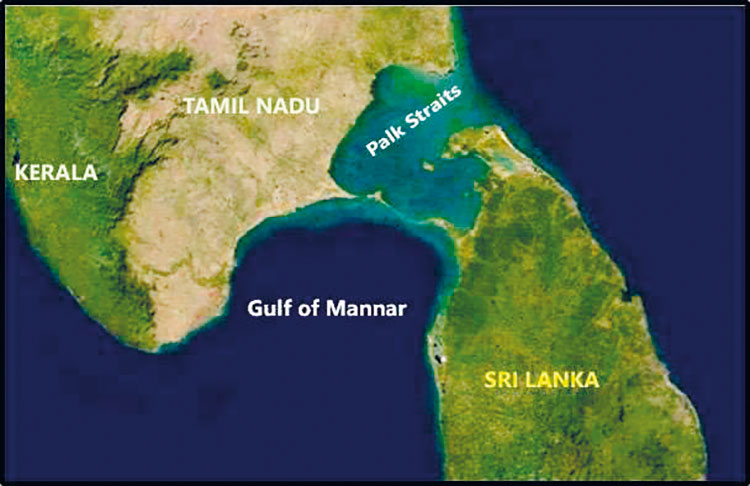
Blue-green land and waterscapes act as ecological corridors across land and water in creating an ecological continuity in order to protect and restore the habitats of native and naturalised species.
In addition, these ecological corridors also help to conserve and improve the habitats of migratory species, as well. One of the main objectives of establishing blue-green land-waterscapes is to reconcile increasing local/regional development and human livelihood challenges in a sustainable manner while, at the same time, safeguard biodiversity and their habitats/ecosystems, as far as possible.
While green landscapes are natural and semi-natural terrestrial vegetation types like natural forests and grasslands, blue waterscapes are aquatic or semi-aquatic vegetation types such as seagrass meadows, mangroves and coastal and other wetlands. These vegetated coastal ecosystems known as ‘blue carbon’ ecosystems are some of the most productive on Earth and located at the interfaces among terrestrial, freshwater and marine environments. They provide us with essential ecosystem services, such as serving as a buffer in coastal protection from storms and erosion, spawning grounds for fish, filtering pollutants and contaminants from coastal waters thus improving coastal water quality and contributing to all important food security.
In addition, they capture and store “blue” carbon from the atmosphere and oceans at significantly higher rates per unit area than tropical forests (Figure 1) and hence act as effective carbon sinks. By storing carbon, these ecosystems help to reduce the amount of greenhouse gas in the atmosphere, thus contributing significantly to mitigate the effects of climate change.

Figure 1: Carbon storage in different vegetation types (Source – What Is Blue Carbon and Why Does It Matter? – Sustainable Travel International)
.Blue-green Carbon Markets
The recognition of blue carbon (BC) ecosystems (primarily mangroves, seagrasses and tidal marshes) as an effective natural climate solution paved the way for their inclusion within carbon markets. Blue carbon is the marine analog of green carbon, which refers to carbon captured by terrestrial (i.e., land-based) plants. The blue-green carbon market involves buying and selling carbon credits from projects that protect and restore coastal and marine ecosystems (blue carbon) and terrestrial ecosystems (green carbon). Since Blue Carbon ecosystems have higher carbon sequestration (capture and store) potential compared to their terrestrial counterparts, blue Carbon credits are worth over two times more than green carbon credits. They offer opportunities for commercial enterprises to offset carbon emissions and in turn support climate action.
Blue Carbon projects are expected to grow twofold in the near future. With the recent surge in international partnerships and funding, there is immense growth potential for the blue carbon market. However, it is critically important to look beyond the value of the carbon sequestered to ensure the rights and needs of local communities that are central to any attempt to mitigate climate change using a blue and green carbon project.
Blue Carbon projects can serve as grassroot hubs for sustainable development by developing nature-based solutions in these ecosystems thus contributing to both climate change mitigation and adaptation. Globally, numerous policies, coastal management strategies, and tools designed for conserving and restoring coastal ecosystems have been developed and implemented. Policies and finance mechanisms being developed for climate change mitigation may offer an additional route for effective coastal management. The International Blue Carbon Initiative, for example, is a coordinated, global program focused on conserving and restoring coastal ecosystems for the climate, biodiversity and human wellbeing.
Until recently, most of these opportunities focus on carbon found in the above ground vegetative biomass and do not account for the carbon in the soil. On the other hand, blue carbon, in particular has the potential for immense growth in carbon capture economics in the near future and can provide significant socioeconomic and environmental benefits. Consequently, blue -green carbon habitats in the Gulf of Mannar – Palk Bay region represent invaluable assets in climate change mitigation and coastal ecosystem conservation and sustainable development.
Gulf of Mannar and Palk Bay Trans-boundary Region
The Gulf of Mannar and Palk Bay region form a transboundary area within the waters of southeastern India and northwestern Sri Lanka. This region supports dense seagrass meadows having a high level of marine biodiversity including marine mammals such as dugong. Sea turtles are frequent visitors to the gulf while sharks, dolphins, sperm and baleen whales too, have been reported from this area. The Mannar region is recognized as an Important Marine Mammal Area (IMMA) of the world by IUCN (Figure 2) and also an Important Bird Area by Birdlife International. This region as a whole is a store house of unique biological wealth of global significance and as such is considered as one of the world’s richest regions from a marine biodiversity perspective.
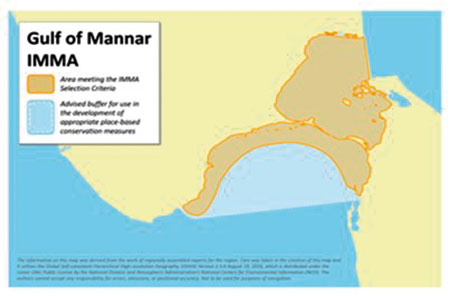
Figure 2. Gulf of Mannar and Palk Bay IMMA (Source – IUCN Joint SSC/WCPA Marine Mammal Protected Areas Task Force, 2022 IUCN-MMPATF (2022)
Gulf of Mannar Biosphere Reserve – India
India has already declared a part of this region as the UNESCO Gulf of Mannar Biosphere Reserve covering an area of 10,500 km2 of ocean with 21 islands and the adjoining coastline. The islets and coastal buffer zone include beaches, estuaries, and tropical dry broadleaf forests, while the surrounding seascape of the Marine National Park (established in 1986) and a 10 km strip of the coastal landscape that include seaweed communities, seagrass communities, coral reefs, salt marshes and mangrove forests form the coastal and marine component of the biosphere reserve on the Indian side of the Gulf of Mannar.
Sri Lankan ‘Proposed’ Biosphere Reserve
On the Sri Lankan side of the Palk Bay there is a semi-enclosed shallow water body between the southeast coast of India and Sri Lanka, with a water depth maximum of 13 m. To the south, a chain of low islands and reefs known as Adam’s Bridge or Rama Setu (Rama’s Bridge), separates Palk Bay from the Gulf of Mannar. The Palk Bay leads to Palk Strait (Figure 3). Palk Bay is one of the major sinks for sediments along with the Gulf of Mannar. Sediments discharged by rivers and transported by the surf currents as littoral drift settle in this sink.
On the Sri Lankan side of the Palk Bay, studies are being conducted by the Dugong and Seagrass Conservation Project to establish an additional 10,000 hectares of Marine Protected Area to support the conservation of dugongs and their seagrass habitat in the Gulf of Mannar and Palk Bay. This project will involve the preparation of a multiple-community-based management plan in conjunction with government, fishing communities and the tourism industry.
With this valuable information emerging from projects of this nature, Sri Lanka has real opportunities to create a large marine protected area in the Gulf of Mannar and Palk Bay region and eventually merging them together with the Gulf of Mannar Biosphere Reserve of India to form a trans-boundary biosphere Reserve.
Terrestrial cum Marine Spatial Plan for the Gulf of Mannar and Palk Bay Region
Therefore, an excellent opportunity awaits both the Governments of Sri Lanka and India to collaborate in preparing of a terrestrial and marine spatial plan for this region, a prerequisite before going further on designing and implementing large scale development plans in establishing wind energy farms, mineral sand extraction, fishing industry, oil exploration and tourism development.
Coastal and Marine Spatial Planning (CMSP) is an integrated, place-based approach for allocating coastal and marine resources and space, while protecting the ecosystems that provide these vital resources.
On the Indian side, the Gulf of Mannar Biosphere reserve is well established and functional. On the Sri Lankan side, already there are three DWLC managed protected areas i) Adam’s Bridge Marine National Park (# 29 in the map – 18,990 ha declared in 2015), ii) Vedithalathiv Nature Reserve (# 35 -29,180 ha declared in 2016) and iii) Vankalai Sanctuary ( # 97 -4839 ha declared in 2008) (Figure 4) which can serve as the core zone of the Sri Lankan counterpart of a trans-boundary biosphere reserve. Due to the integrated nature of shallow wetland and terrestrial coastal habitats, Vankalai Sanctuary, in particular is highly productive, supporting high ecosystem and species diversity.
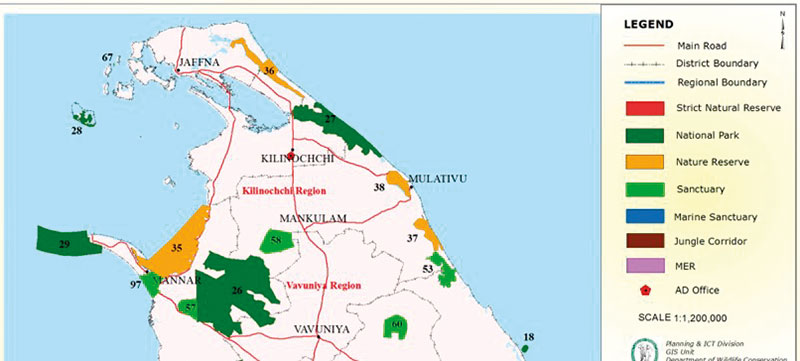
Figure 4: Protected Areas in Norther Sri Lanka Managed by the Department of Wildlife Conservation Source: DWLC
This site provides excellent feeding and living habitats for a large number of water bird species, including annual migrants, which also use this area on arrival and during their exit from Sri Lanka.
Having several coastal and marine protected areas already within the Sri Lankan territory provide an excellent opportunity to establish the Gulf of Mannar – Palk Bay blue-green Biosphere Reserve (Sri Lanka) initially and eventually to join up seamlessly with the already established Gulf of Mannar Biosphere Reserve on the Indian side to create a trans-boundary blue-green biosphere reserve.
This makes perfect sense because unlike sedentary plant species, mobile animal and plant groups (phytoplankton, in particular) do not respect human demarcated territorial boundaries. The provision of a common and unhindered protected coastal and marine passage for their customary movement for food and raising young is therefore of crucial importance in conservation management. Scientific evidence-based selection of additional areas, if necessary and their respective boundaries are best be determined in consultation with expert groups on marine mammals and reptiles, birds, fish, coastal vegetation conservation, sociology and industrial development from both sides of the divide.
Proper spatial planning needs to be done before large-scale development plans are designed and implemented in order to avoid conflicts of interest leading to inordinate delays and teething problems in project initiation. As a priority, the protected blue-green core and buffer regions need to be demarcated for their conservation. This could best be done in this narrow passage of land and water between Sri Lanka and India
( Palk Strait & Gulf of Mannar) by preparing a marine and terrestrial spatial plan along the UNESCO Man and Biosphere conceptual guidelines differentiating core, buffer and transition zones. While the protected areas in the core and buffer zone provide all important ecosystem services that would also serve as breeding ground for fish, crustaceans, marine reptiles, birds and mammals thereby provisioning sustainable industries to be developed in the surrounding transition areas demarcated in the joint spatial plan.
In addition, the Satoyama Global Initiative established by the Japanese at UNESCO as a global effort in 2009 to realise ‘societies in harmony with nature’ in which – Satoumi – specifically referring to the management of socio-ecological production landscapes in marine and coastal regions, is also a good model to be considered for conservation of biodiversity and co-existence between humans and nature.
Final Plea
In order to take this proposal forward from the Sri Lankan side, a number of useful baseline reports are already available including, but not limited to, the following: i. Biodiversity Profile of the Mannar District (CEJ & USAID 2022), ii. The Gulf of Mannar and its surroundings (IUCN 2012), iii) Atlas of Mangroves, Salt Marshes and Sand Dunes of the Coastal Area from Malwathu Oya to Pooneryn in the Northwestern Coastal Region, Sri Lanka (Ecological Association of Sri Lanka, Peradeniya, Sri Lanka, 2020). iv. Integrated Strategic Environment Assessment of the Northern Province of Sri Lanka (CEA 2014).
If this proposal to establish a Trans-boundary Blue-Green Biosphere Reserve in the Gulf of Mannar and Palk Bay is acceptable in principle to the Governments of Sri Lanka and India, it would be ideal if the Man and the Biosphere (MAB) program UNESCO which is an intergovernmental scientific program whose mission is to establish a scientific basis for enhancing the relationship between people and their environments to partner with the relevant Government and non-governmental agencies in both countries in making it a reality. This proposed concept has all the necessary elements for developing a unique sustainable conservation cum industrial development strategy via nature-based solutions while at the same time contributing to both climate change mitigation and adaptation.
by Emeritus Professor Nimal Gunatilleke,
University of Peradeniya
-
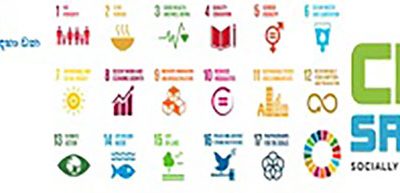
 Business1 day ago
Business1 day agoStrengthening SDG integration into provincial planning and development process
-
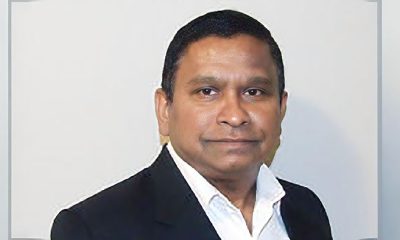
 News5 days ago
News5 days agoBid to include genocide allegation against Sri Lanka in Canada’s school curriculum thwarted
-

 Sports6 days ago
Sports6 days agoSri Lanka’s eternal search for the elusive all-rounder
-
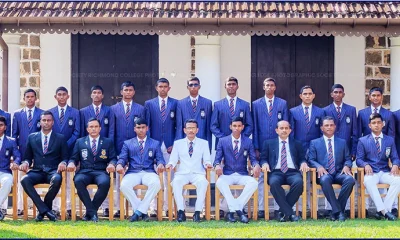
 Sports2 days ago
Sports2 days agoTo play or not to play is Richmond’s decision
-
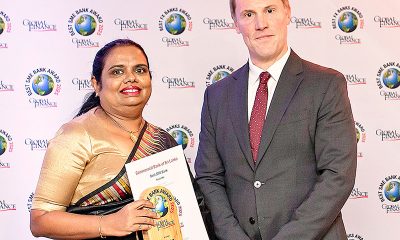
 News6 days ago
News6 days agoComBank crowned Global Finance Best SME Bank in Sri Lanka for 3rd successive year
-
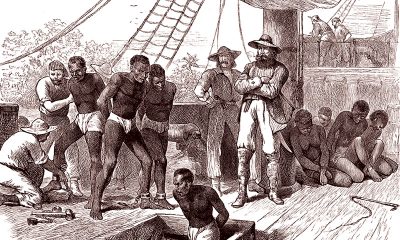
 Features6 days ago
Features6 days agoSanctions by The Unpunished
-
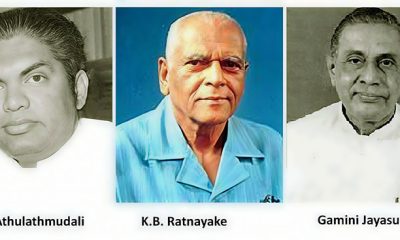
 Features6 days ago
Features6 days agoMore parliamentary giants I was privileged to know
-

 Latest News4 days ago
Latest News4 days agoIPL 2025: Rookies Ashwani and Rickelton lead Mumbai Indians to first win

